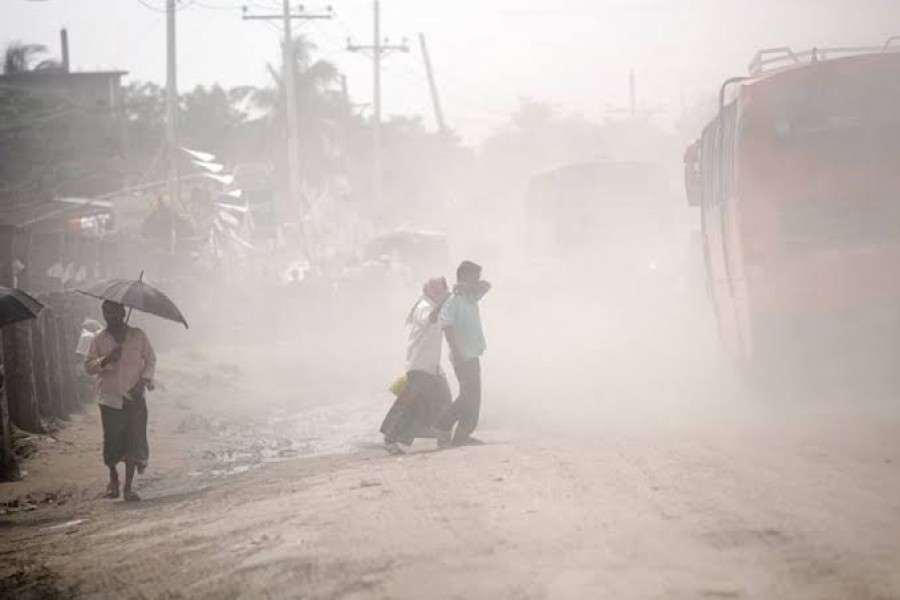Four to five decades ago, parents settled in the big cities would be seen taking their children to their home villages for a few days during long school vacations. It was like a ritual for the families that owned homesteads in rural areas. In fact, those were their ancestral homes. Many of the classmates of the village-visiting boys and girls remained deprived of these excursions. They were purely city-based, with no strong links with villages. The villages back in those days would offer views which were completely different from the cities.
Initially, these spectacles used to amaze a teenage boy or girl from Dhaka. It took time for the children to reconcile with those scenes. In the city, most of them would drink piped water supplied by the government authorities. In the rural areas, they would find, to their utter shock and horror, the village women fetching water for drinking and household chores from nearby rivers and canals. In areas without rivers, ponds would serve as sources of water. Normally one of the ponds which --- quite large in size, would be kept reserved and protected. People were barred from using these ponds, called 'dighis', for bathing, washing or other purposes. Smaller ponds would be dug for these jobs. Tube-wells were largely a rarity in the vast rural area, especially in the remote corners. In some rural areas, wells would be dug provided the soil was conducive to digging work. Not all types of soil are suitable for well-digging.
In the 21st century, 90 per cent of the rural people are reportedly covered by the local government's tube-wells of varying depth; but many of them start malfunctioning after some time. Villagers have to wait for months to have them repaired.
Back in the distant past, the fact that villagers drank river or pond water without little worries was a normal reality in vast areas of Bengal. Today's researchers working on village life attribute this rural feature to the fully pollution-free ambience of villages in those times.
However, this trend of drinking 'untreated' water used to take a heavy toll on the rural people's physical wellbeing. Water-borne diseases like dysentery, diarrhoea, typhoid, and hepatitis were common in some sections of people. Moreover, during the times of cholera outbreak, few villagers would understand that river and pond water was the main culprit behind these infectious diseases. But the rural folks would not stop drinking water from these traditional sources. In the cases of epidemics, many would turn to herbal medicines prescribed by local quacks. Except these difficult times, river or pond water for drinking was used widely, and with little concern.
A common scenario in the early Bengal comprised village women returning home after bath in a river, with everyone carrying an earthen pitcher filled with water to be used for drinking. The stark reality is, large areas in the rural Bangladesh still suffer from non-availability of pure drinking water and poor sanitation. Tube-wells are not found in all villages. In extreme cases, diarrhoeal patients from villages near the capital these days are rushed to ICDDR, B (International Centre for Diarrhoeal Disease Research, Bangladesh) at Mahakhali in the city. No reliable data is available on the extent of coverage of remote villages with oral rehydration solution (ORS).
Although electricity has nowadays emerged as a highly essential utility in the large swathes of rural Bangladesh, its absence in earlier times turned out to be a blessing. Pitch-black dark would descend on the villages after dusk. The dim light coming from oil lamps or hurricanes would create an ideal atmosphere for young mothers singing lullaby to their babies. In a rainy evening, this half-lit darkness would create the long-awaited atmosphere for boys and girls to badger their grandmas to tell them ghost stories. With electricity now covering nearly 70 per cent of the rural areas, sweet lullabies and fairytales have little space in villages. Instead, the age-old after-dusk silence is found shattered by myriad types of cacophonies including Hindi songs, and political and other speeches. The peaceful village nights punctuated by insect chirps have long vanished. Besides, in areas having electricity connections, TVs with dish channels continue to contribute to noise pollution. On a different level, if a village happens to be situated beside a river, the people have to put up with the sound of engine-run boats and trawlers throughout the night.
Sound pollution has lately started assuming alarming proportions. If there are no engine boats, their place is filled by rice-mills and other factories. Even tiny business centres are not free of this menace. Like in the capital, hawking dozen types of commodities by using megaphones is now becoming a common feature in the villages.
With the grabbing of rivers and the filling-up of water bodies going on in full swing, the age-old sources of pure water have long vanished in villages. Arsenic-free tube-wells across the country can cater to a limited number of people only. Thanks to reckless use of pesticides and fertilisers on farmland beside rivers and their washing away into waters has invited the scourge of water pollution on full-scale. Besides, the rivers downstream have to take in the garbage-filled flows coming from upstream. Many of the smaller rivers flow out from the larger ones adjacent to big cities or river ports. The water of many still-unpolluted rivers has been identified as being vulnerable to irreparable pollution in the near future.
Like on the outskirts of Dhaka, illegal brick kilns continue to mushroom in villages. Located beside paddy fields or localities, these kilns spew out noxious smoke through their tall chimneys, thus vitiating the air in the surrounding areas. Air pollution has emerged as a dreadful scourge in the once-sylvan rural areas. Half a century ago, people would have to stretch their credulity to visualise a rural Bangladesh plagued by so many pollutions. Woefully, few government agencies bother to look into the present rural maladies.


